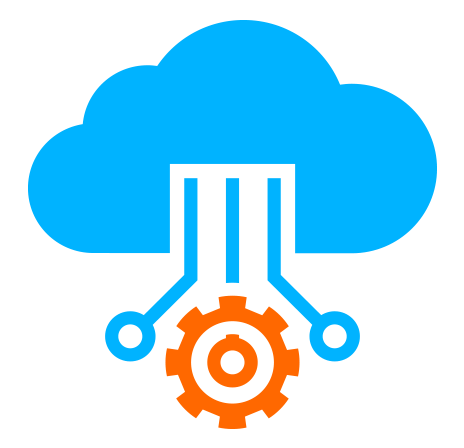 Server
Colocation
Server
Colocation
 CDN
Network
CDN
Network
 Linux Cloud
Hosting
Linux Cloud
Hosting
 VMware Public
Cloud
VMware Public
Cloud
 Multi-Cloud
Hosting
Multi-Cloud
Hosting
 Cloud
Server Hosting
Cloud
Server Hosting
 Kubernetes
Kubernetes
 API Gateway
API Gateway

Data science is no longer a buzzword — it’s the driving force behind business decisions, innovation, and predictive intelligence. But as data keeps multiplying, the computational requirements for analysis, modeling, and visualization are skyrocketing. According to a recent report by Fortune Business Insights, the global data science platform market is expected to surpass USD 460 billion by 2032, growing at a CAGR of 25.5%. A big part of this explosive growth can be credited to the integration of GPU servers and cloud computing in data science workflows.
Here’s why: traditional CPU-based systems are hitting their limits. Training complex models, running large-scale analytics, or processing unstructured data now demands parallel computing power, which is where GPU servers come into play. GPUs (Graphics Processing Units) can process thousands of simultaneous operations, making them ideal for machine learning, data mining, and deep learning workloads.
But not every organization can afford to buy high-end GPUs like NVIDIA A100 or H100 — they’re expensive, need constant maintenance, and require cooling infrastructure. This is where GPU server rental for data science becomes a game-changer. Renting cloud GPU servers gives data professionals access to high-speed computing power without heavy upfront costs.
Let’s explore how GPU server rentals are revolutionizing the way data scientists work, train models, and scale analytics in a cloud-driven world.
A GPU server is a specialized computing server that uses Graphics Processing Units (GPUs) instead of or alongside CPUs (Central Processing Units) to accelerate data processing. While CPUs are great for sequential tasks, GPUs excel in parallel computing — they can handle thousands of threads at once, making them ideal for data-heavy operations.
In data science, where tasks like data preprocessing, model training, and visualization require immense computational power, GPUs drastically reduce the time needed for complex operations. For instance, a model that takes 12 hours to train on a CPU can often be completed in under 2 hours on a GPU-powered system.
Moreover, with cloud hosting options, these GPU servers can now be accessed remotely, eliminating the need for on-premise setup. You simply rent the computational resources you need — whether it’s one GPU or a multi-GPU cluster — and pay only for the time you use it.
Buying and maintaining a GPU server is no small investment. The cost of a single high-end GPU like the NVIDIA H100 Tensor Core can exceed $25,000, and that’s before accounting for infrastructure, electricity, and maintenance. Renting a cloud GPU server offers a smarter alternative — it’s flexible, cost-effective, and scalable.
Here’s why GPU server rental makes perfect sense for data scientists and analytics teams:
Renting lets you access powerful computing resources without the financial burden of ownership. With cloud GPU hosting, you only pay for what you use — whether it’s hourly, daily, or monthly. This helps startups, research labs, and growing data teams manage budgets effectively while still working on large datasets.
As your projects grow, so do your computational needs. Renting GPU servers from a cloud provider allows instant scalability — you can upgrade to more GPUs or higher performance tiers whenever needed, without delays or hardware procurement cycles.
With cloud hosting, your GPU servers are accessible anytime, anywhere. This makes it easier for distributed data science teams to collaborate in real time, share datasets, and work on models collectively using remote access.
Managing and cooling GPU hardware can be a headache. But with GPU cloud hosting, all backend management — including hardware updates, system monitoring, and maintenance — is handled by the provider. You simply focus on analytics and results.
Modern GPUs are built for data-driven applications. NVIDIA’s A100 or RTX 4090 GPUs, for instance, deliver lightning-fast performance for machine learning, data modeling, and AI-driven analytics. This speed advantage is essential for iterative model training and testing cycles.
The beauty of GPU cloud servers lies in their ability to drastically reduce processing time while improving accuracy and efficiency in analytics. Let’s understand where exactly they make a difference:
Handling large, unstructured datasets can be time-consuming. GPU servers allow parallel data processing, making it easier to clean, transform, and organize datasets much faster than CPUs can manage.
Training ML models involves repetitive mathematical operations — especially matrix multiplications — which GPUs excel at. By using GPU hosting in the cloud, data scientists can train models faster, fine-tune hyperparameters, and iterate more efficiently.
Deep learning frameworks like TensorFlow and PyTorch are optimized for GPUs. Renting GPU cloud servers ensures seamless compatibility and better performance for neural network training, image recognition, NLP, and other AI-heavy tasks.
Large-scale visualizations require heavy graphical processing. GPUs can render complex 2D and 3D visualizations almost instantly, making analytics more interactive and insightful.
When analyzing terabytes of structured or unstructured data, GPUs help run queries, perform predictive analysis, and process data streams in real time. This high-speed computation enables faster insights and better decision-making.
The adoption of GPU servers in the cloud isn’t limited to tech giants. A wide range of industries are tapping into this power:
- Finance: For fraud detection, algorithmic trading, and risk modeling.
- Healthcare: For drug discovery, diagnostic imaging, and genomic sequencing.
- Retail and E-commerce: For demand forecasting, recommendation systems, and customer analytics.
- Automotive: For autonomous vehicle simulation and sensor data analysis.
- Research and Academia: For simulations, AI research, and complex mathematical modeling.
These industries are realizing that GPU cloud hosting brings agility, scalability, and faster experimentation — essential in today’s data-driven economy.
Not all GPU cloud providers are built the same. When selecting one, focus on these key aspects:
1. GPU Specifications – Look for providers offering high-performance GPUs like NVIDIA A100, H100, or RTX series, depending on your use case.
2. Cloud Scalability – Ensure the platform allows vertical and horizontal scaling based on your project’s growth.
3. Pricing Flexibility – Choose pay-as-you-go plans or subscription models that match your workload frequency.
4. Data Security & Compliance – Opt for providers with robust data protection, encryption, and compliance certifications.
5. Integration with Data Science Tools – The provider should support popular frameworks like TensorFlow, PyTorch, Scikit-learn, Spark, and Jupyter Notebooks.
6. Support and Uptime – Reliable technical support and 99.9% uptime ensure uninterrupted workflow for data scientists.
Some reputed names in GPU cloud hosting include AWS EC2 (P-series), Google Cloud AI Platform, Microsoft Azure, and Cyfuture Cloud, known for its cost-effective, high-performance GPU servers tailored for AI and analytics.
Before cloud computing became mainstream, only large enterprises with heavy infrastructure budgets could perform intensive data analytics. Today, thanks to cloud hosting and GPU server rental, even startups, students, and researchers can access enterprise-grade computational power.
Cloud-based GPU servers have made data science truly scalable and inclusive — you don’t need to own hardware, just an internet connection and the right cloud plan. This democratization of computing power is accelerating the pace of AI innovation across the world.
In the modern data-driven landscape, speed and scalability define success. Whether it’s training a predictive model, analyzing millions of data points, or visualizing patterns in real time — GPU server rental for data science gives you the edge you need.
With cloud GPU hosting, you can unlock unmatched computational power without investing in physical hardware. It’s flexible, cost-efficient, and perfectly aligned with the needs of today’s analytics-driven businesses.
So, the next time your dataset grows beyond your local system’s capability, remember — you don’t need to buy a GPU server. Just rent one in the cloud, power your data science workflows, and let high-speed computing do the heavy lifting for you.

Let’s talk about the future, and make it happen!
By continuing to use and navigate this website, you are agreeing to the use of cookies.
Find out more


